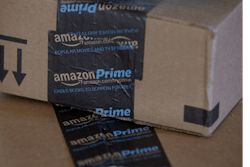It has been said that the ability to learn faster than your competitors is the only truly sustainable competitive advantage. And that's just what those companies that learn to apply tax planning best practices to their supply chain structure are finding out.
For several years purchasing executives, particularly in the retail industry, have been trying to squeeze every conceivable dollar out of the supply chain. They have focused on process improvements such as total quality management, just in time (JIT), and Six Sigma. In addition, they have poured significant investments into information systems and, more recently, vendor partnering. However, one of the single biggest costs of managing a supply chain has often gone unaddressed: tax.
The reason for this disconnect is that, unlike procurement professionals and information technology (IT) professionals who work on the operational side of the business (i.e. in profit centers), tax professionals have typically limited their discussions to a company's financial group (a cost center).
Typically, corporate tax professionals are measured on a no surprises basis and are seldom looked to for innovations. Instead, they are encouraged to mitigate tax overhead costs. Often, from a strategic perspective, no news is goods news from the tax department. Commonly, this has led to a disconnect between pragmatic operational logistical planning and the most sustainable form of tax planning — functional-based tax planning.
What Are Supply Chains Trying to Accomplish?
Supply chain design is unique to each industry, and the measurement of supply chain effectiveness can be based on several different metrics, such as the percent of perfect orders, cost/margin or other asset-based measurements. Regardless of the metrics used, the end result must be to satisfy customers while managing costs.
In most circumstances, managing costs (i.e. reducing retail costs) equates with customer satisfaction, but in almost every circumstance cost is at least a component of customer satisfaction. As a result there has been an intense focus on cost reduction.
Supply chain managers are trying to respond to the increased velocity through supply chains in response to accelerated changes in fashion, technology and volume. In some cases this has lead to a split in supply chain methodologies within organizations for volatile and nonvolatile goods.
The thought processes and technologies required to optimize a given enterprise's supply chain have also changed. Increasingly, companies are developing tighter relationships with their suppliers, including the sharing of information once thought of as being sensitive. There has also been an enhanced reliance on technology hardware and software. Two further complexities arising in the early part of the 21st century are cross ownership integration and the internationalization of the supply chain. From an operational perspective, this has resulted in new thinking and greater contractual flexibility regarding commercial relationships.
In an environment where supply chains are trying to respond to the pressures of maximizing technology, thinking outside the limits of economic ownership and extending beyond international boundaries, a tax focus has been glaringly absent.
Where is Tax Planning Applicable?
Tax planning applies to both the steps in the supply chain (supplier, distribution function, retail channels and customer delivery) and to processes that drive successful supply chain management (procurement, electronic data interchange (EDI), merchandising, finance, branding and asset management). Further, it applies to above-the-line and below-the-line taxes. (Above-the-line generally refers to taxes that impact operating income above the line labeled as Net Income Before Income Taxes. Above-the-line costs are expenses that are used to compute net operating income before income taxes. They include operational taxes such as sales and use taxes, property taxes, franchise and license taxes and excise taxes. Below-the-line taxes impact income-based taxes.)
Tax issues permeate every aspect of identifying, acquiring, importing, transporting, distributing and selling goods. Tax planning can impact almost every aspect of the supply chain. As such, one of the few ways a company can benchmark its operational tax profile is to look at the economic efficiency of its supply chain.
Further, unless a holistic approach is adopted, supply-chain-related tax savings will often be left on the table. Below is a discussion of some of the areas, by function, where savings might lie.
Procurement
From a tax perspective, ownership of the transaction (i.e. the ability to determine the amount, subject matter and jurisdiction) of taxation is the single most crucial function to own. Ownership of this function will allow the taxpayer, not its vendors, to determine the subject matter of the transaction (services, intangible or tangible personal property), the value of each component (if it is a bundled transaction) and the appropriate jurisdiction to impose tax. This is critically important because each of these factors determine the level of tax the company will pay. Specifically:
- In many states, intangible assets are not subject to property tax. As such, warranty cost included in and capitalized on as a part of certain asset purchases will unnecessarily increase a company's property tax base;
- In several states, software electronically downloaded is not subject to sales tax. The ability to facilitate this type of delivery to the ultimate end-user may determine whether or not the software is subject to sales tax;
- Many companies often disconnect vendor volume or contract inducement payments from the purchase of the underlying tangible personal property. As such, they overstate income, sales or property tax values of such assets;
- The ability to value the importance of this function within the organization and charge related entities for its services may produce a more state income tax-efficient profile.
- Planning pertaining to the importations of goods can often lead to a reduction in the customs and duties paid..
- In situations with rapid vendor turnover, it's important to manage the related escheat (unclaimed property) exposure.
Further, owning the tax-determination piece of a transaction allows companies to reduce the exposure created by mis-compliance.
Brand Management
For many companies, brand management is the essential value driver of the organization. The ability to control the look and feel of the customer experience is essential to maintaining the company's position within the marketplace. The tax implications of branding include:
- The determination within the supply chain of when goods are branded and therefore where the value is added. This, in part, determines the situs of taxability and the value of the goods for income and property tax purposes.
- The ability to license and protect intellectual property associated with the brand, such as copyrights, patents, trademarks and trade names, will often impact the jurisdiction of income taxation.;
- The ability to attach the value of certain intellectual property may impact the customs and duties charges on the importation of products.
- The situs of where such intellectual property is held will impact the tax costs of dispositions when a business unit, and its related intellectual property, is sold.
Merchandising and Marketing
The merchandising function determines what merchandise is carried and where such merchandise is displayed. Often, it also determines the overall store layout or design. These are critical factors in retail operations, as convenience and functionality are essential in retaining customers in today's fast-paced society.
There are many tax implications, including:
- The property tax implications of the capitalization of site selection and store design costs; and
- The state income tax implications of valuing and properly sourcing the services associated with the merchandising and marketing functions.
Finance
The structure of a company's internal financing can also impact its overall tax profile.
- The capital structure of a legal entity can often impact its franchise tax profile.
- Efficient internal leveraging can, in some jurisdictions, serve to reduce an operation's state income taxes.
Customer Relationship Management (CRM)
Increasingly, companies are seeking to manage the data collected from a myriad of contact points with customers. Contact points include data gathered in surveys, interactions with customer service representatives, orders placed online, dealings with warranty personnel and the usage of coupons. This information is critical to companies because it tells them, from a customer perspective, the relevance of their products or services in the marketplace, the effectiveness of their marketing efforts and the efficiency of their delivery system. The tax implications of building the infrastructure to compile and store this data include:
- Due to the extremely high value of customer data, there are state income tax implications as to where CRM data is stored and maintained.
- The ability to license and protect intellectual property associated with the brand, such as copyrights, patents, trademarks and trade names, will often impact the jurisdiction of income taxation.;
- Property tax implications as to where CRM software is capitalized.
- Since CRM is a communication-intensive function, a review of the excise tax amounts on telecommunications charges may lead to certain excise tax refunds.
Distribution and Asset Management
In an era of just-in-time replenishment, distribution is a critical function. Efficient management of distribution center (DC) functions and of the related transportation and merchandise handling equipment is a key component of creating a cost-efficient supply chain. There are significant tax impacts on these functions as well, for example:
- Paying attention to the actual assets employed and special purpose designs of facilities can impact the amount of property taxes paid.
- For those jurisdictions imposing property taxes on inventory, employing the proper valuation methodology can reduce the holding cost of such assets.
- In certain jurisdictions there exist sales tax exemptions for transportation equipment used in inter-state commerce.
- Improper capitalization of cost, such as duplicative site selection costs or the improper characterization of costs as real property as opposed to personal property, can impact property tax assessments.
- Often, distribution activities, if not segregated into separate legal entities, can cause a company to expose its major profit centers to unnecessary multi-state income taxation.
- Taking advantage of negotiating with, and sourcing of Internet sales to, local jurisdictions (cities/counties) can reduce the cost acquiring internal use assets.
- A failure to closely examine inventory handling operations can lead to an overcapitalization of such costs for federal and state income tax purposes.
Retail
Tax also impacts the cost of running retail operations. Certain characteristics make operating retail operations susceptible to tax inefficiency, including:
- The high turn over in employees can lead to escheat (unclaimed property) exposure.
- The employee-intensive nature of retail can lead to process-based payroll tax incompliance and, perhaps, the payment of unnecessary payroll taxes.
- Inefficiently designed gift card programs can often cause unnecessary escheatment of funds.
- Certain operational structures may reduce the use tax cost of producing and distributing advertising inserts.
- State income tax planning pertaining to vendor payments negotiated for retail display allowances, cooperative advertising, volume discounts and exclusive carry arrangements may lead to significant savings.
- Potential state income tax savings may be obtained based on international sales and distribution assets.
- Review of sales tax systems should be reviewed to reduce the costs of mis-compliance.
Key Factors in Creating a Competitive Advantage
A competitive advantage exists for those companies that look beyond tax compliance and towards tax self determination. Some of the key factors required to achieve this result are discussed below.
Inter-departmental Coordination
To effectively manage a supply chain from a tax perspective, certain departments must coordinate their efforts. Tax planning is most effective when tax planners know in advance what operating functions plan to do (purchase assets, restructure operations or locate facilities), before they do it. In particular, procurement and distribution operations as well as information technology (IT) should vet prospective planning, purchases and changes in operations with a company's tax department. Further, reaching out to the tax department and encouraging them to focus on reducing operating costs can often produce significant results.
Holistic Approach
Each supply chain has a unique structure. A detailed understanding of the operational elements of the supply chain is essential to effective and sustainable tax planning. Further, within tax, a multi-disciplinary approach is required to identify a broad range of potential efficiencies (property, sales and use, franchise, excise, state, and federal income tax).
Supply chains are not static structures. In fact, the structure of supply chains is constantly changing, as are the products they convey. The need for agility in the structure of supply chains leads to ongoing opportunities for tax efficiency or inefficiency, depending upon whether the organization has an operationally focused tax function. Significant investments in technology and processes in an attempt to create a competitive advantage can be squandered if tax is ignored.











